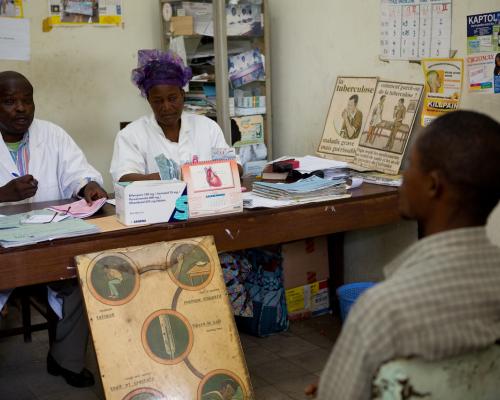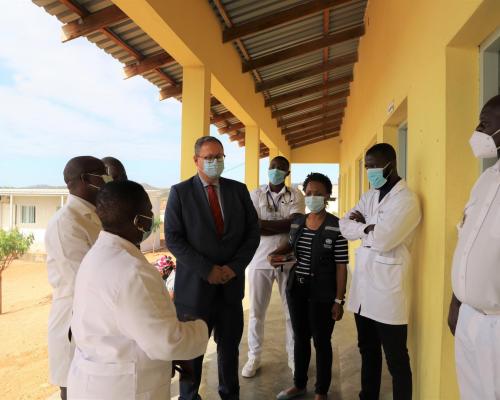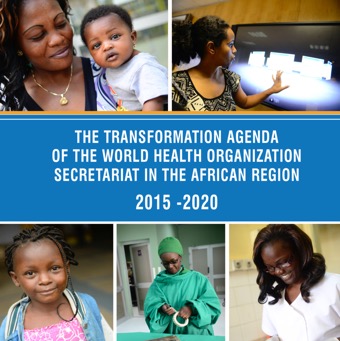WHO actively responds to anthrax epidemic in the DRC
Goma – In mid-May, 57-year-old Pierre* was admitted to a health centre in the Lubero area after suffering from severe itching on his right hand, followed by pruritus and a swelling of his forearm. He was treated and, given the unusual symptoms, samples were collected and sent for analysis at the laboratory of the Institut National de Recherche Biomédicale (INRB) in Goma.
An alert was previously issued at the end of March 2025 following the death of dozens of buffalo and hippopotamuses in Virunga National Park in North Kivu. Samples taken on 29 March from a recently deceased hippopotamus and examined at the Goma veterinary laboratory revealed the presence of spores of the bacillus responsible for anthrax.
Anthrax is a bacterial zoonosis (disease transmissible from animals to humans) that generally affects ruminants (cows, sheep and goats). Humans can become infected through contact with a sick animal or contaminated products (such as meat, blood, wool, hides and bones). All forms of human anthrax (cutaneous, gastrointestinal and respiratory) require hospitalization and medical treatment.
To ensure a multi-sectoral response to this concerning health situation, the national departments of health, environment, fisheries and livestock, with support from partners including the World Health Organization (WHO), UNICEF, FAO and CDC Africa, have put the “One Health” approach into practice. The close collaboration between the human, animal and environmental health services is designed to protect lives in response to health emergencies.
A delegation from these departments and organisations visited the Binza and Rutshuru health zones from 25 to 28 May 2025 to strengthen surveillance and the response to outbreaks of suspected cases of anthrax in the Binza and Lubero health zones.
“One of the high-impact measures led by the national authorities with the support of partners was the development of the national multi-sector anthrax preparedness and response plan. Through this common approach to the response, we can ensure a comprehensive response, from prevention activities to the clinical management of patients. We are confident that this health threat will soon be over,” said Dr Aline Katerekwa Ntamushigo, Medical Supervisor at the National Programme for Emergencies and Humanitarian Action (NPEHA). “Our discussions with those involved on the ground are helping us to manage this risk effectively to protect people, animals and the environment.”
Since the announcement of the epidemic, WHO has supported the response on several levels. Dr Célestin Ndaliko, epidemiologist in charge of surveillance at the WHO Office in the DRC, was a member of the response team that went to Binza. “There are major challenges in terms of disease detection. So, every anthrax investigation becomes an act of resilience, a glimmer of hope to prevent the spread of this devastating disease.”
As of 26 May 2025, 24 suspected human anthrax cases had been reported, alongside the deaths of 9 goats, one cow, 60 hippopotamuses and 27 buffalo reported in four health zones in the eastern province of North Kivu.
“Our support has been provided at several levels, and we are particularly keen to provide appropriate care for those affected. In most cases, the disease can be cured with antibiotics, which must be prescribed by a health professional,” explained Dr Leopold Ouedraogo, Emergency Manager in the provinces of North and South Kivu.
WHO has made more than four tonnes of medicines available to 12 health facilities, a large quantity of which has been handed over to the authorities in the Binza health zone in Rutshuru territory.
“So far, even if our Binza health zone has not yet recorded any human cases, we have what it takes to prevent and be ahead of what could happen,” said Dr Bernard Kakule, Chief Medical Officer for the Binza health zone.
WHO has played a central role in cross-border coordination between the Democratic Republic of Congo and Uganda, facilitating communication and collaboration between the two countries in response to the re-emergence of anthrax in humans and animals. Surveillance has thus been strengthened, notably by activating the “One Health” unit in Rutshuru, to ensure early detection and rapid response in high-risk health zones by integrating the human, animal and environmental dimensions of health.
To build local capacity, the WHO has also supported the training of community relays, the development of awareness-raising materials and the conduct of public and door-to-door awareness-raising campaigns on disease prevention measures. The Organisation also donated prevention kits (chlorine, hand sanitizers), essential medicines and medical equipment for treatment, and encouraged collaboration with technical partners such as INRB to improve epidemiological surveillance.
Despite security and logistical challenges, WHO's support has enabled the foundations to be laid for a coordinated response, while highlighting the need for greater commitment to community awareness-raising, the safe management of carcasses and the vaccination of animals at risk.
Since the epidemic was announced, 24 people have been treated in health facilities in the Binza and Lubero health zones, including Pierre, who has been discharged from the hospital and resumed his life.
On the ground, our teams are still working hard to continue protecting people and their herds, working together in the face of a common threat.
Communications Officer
WHO Regional Office for Africa
Email: dialloka [at] who.int (dialloka[at]who[dot]int)
Communications Officer
WHO DRC
Tel : +243 81 715 1697
Office : +47 241 39 027
Email: kabambie [at] who.int (kabambie[at]who[dot]int)


